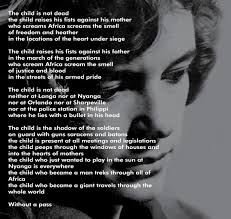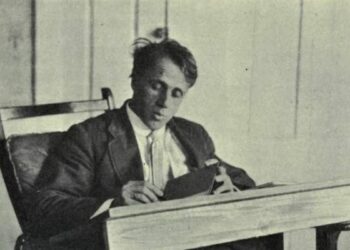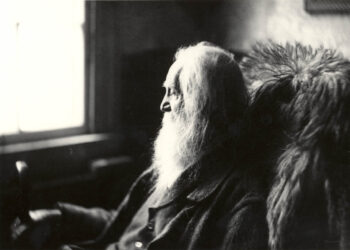The Child is not Dead by Ingrid Jonker Poem Summary Line by Line with Themes, Ingrid Jonker (1933-1965) was a prominent South African poet whose work has been compared to Sylvia Plath and Anne Sexton for its intensity and emotional depth. Jonker’s poetry is deeply personal, yet it resonates with universal themes of love, loss, and resistance against oppression. Her work often reflects the turbulent political climate of apartheid-era South Africa. Despite her tragic and early death, Jonker’s legacy endures, and she is celebrated for her poignant and powerful contributions to literature. The Child is not Dead by Ingrid Jonker Poem Summary Line by Line with Themes
The Child is not Dead by Ingrid Jonker Poem Summary
“The Child is not Dead” is a poem that addresses the brutality of apartheid in South Africa, specifically focusing on the violent deaths of innocent children. The poem serves as a powerful indictment of the oppressive regime and a call to remember those who have suffered. The Child is not Dead by Ingrid Jonker Poem Summary Line by Line with Themes
Lines 1-4
The child is not dead the child lifts his fists against his mother who shouts Afrika shouts the breath of freedom and the veld in the locations of the cordoned heart
Jonker begins with a striking declaration: “The child is not dead.” This line immediately challenges the finality of death, suggesting that the spirit or memory of the child persists. The child, despite facing violence, raises his fists in defiance. “Afrika shouts the breath of freedom” evokes the cry for liberation that permeates the land, even in the face of brutal repression.
Lines 5-8
The child is not dead not at Langa nor at Nyanga not at Orlando nor at Sharpeville nor at the police post in Philippi
The repetition of “The child is not dead” reinforces the persistence of memory and resistance. Jonker lists locations significant to the anti-apartheid struggle, each a site of violence and martyrdom. By naming these places, she acknowledges the widespread and pervasive nature of the brutality.
Lines 9-12
where he lies with a bullet through his brain the child is the shadow of soldiers on guard with rifles saracens and batons the child is present at all meetings and legislation
Here, Jonker provides a stark image of the child’s death, making the violence explicit. The child becomes a “shadow of soldiers,” a haunting presence that symbolizes the pervasive impact of state violence. Even in legislative halls and official meetings, the child’s memory lingers, a silent witness to the injustice enacted there.
Lines 13-16
the child peers through the windows of houses and into the hearts of mothers this child who just wanted to play in the sun at Nyanga is everywhere the child grown to a man treks all over Africa the child grown into a giant journeys through the whole world
The poem transitions from the immediate violence to the broader impact. The child “peers through the windows of houses,” a metaphor for the lingering trauma in the community. Jonker universalizes the child’s experience, suggesting that the spirit of resistance and the cry for justice extend beyond South Africa to the entire world. The child, as a symbol of innocent suffering and defiance, becomes a giant, embodying the global struggle for justice.
Lines 17-20
Without a pass In the shadow of soldiers with their Saracens and batons and every meeting and every law
The poem closes with a powerful image of the child’s omnipresence. Despite the oppressive measures symbolized by “passes,” “Saracens,” and “batons,” the child’s memory and spirit of defiance cannot be contained. The repetition of “every meeting and every law” underscores the enduring presence of this resistance.
Summary
“The Child is not Dead” by Ingrid Jonker is a poignant and powerful poem that addresses the horrors of apartheid through the lens of a child’s death. The poem serves as a stark reminder of the innocent lives lost and the enduring spirit of resistance against oppression. Jonker uses vivid imagery and repetition to emphasize the persistence of memory and the universal impact of the child’s suffering and defiance.
Themes
1. Resistance and Defiance
The child’s raised fists symbolize resistance against oppressive forces. Jonker portrays the child’s spirit as unyielding, embodying the broader struggle for freedom and justice.
2. Memory and Legacy
The repeated assertion that “The child is not dead” highlights the theme of memory. The child’s spirit lives on, haunting the perpetrators and inspiring ongoing resistance. This theme underscores the enduring impact of violence and the importance of remembering those who have suffered.
3. Innocence and Brutality
Jonker juxtaposes the innocence of the child with the brutality of the apartheid regime. The poem highlights the tragic loss of innocent lives and the cruel reality of state violence.
4. Universal Struggle for Justice
By expanding the child’s journey beyond South Africa, Jonker universalizes the struggle against oppression. The poem suggests that the fight for justice is a global one, transcending geographical boundaries.
Conclusion
Ingrid Jonker’s “The Child is not Dead” is a powerful indictment of apartheid and a poignant reminder of the innocent lives lost to state violence. Through vivid imagery, repetition, and symbolic language, Jonker captures the enduring spirit of resistance and the universal cry for justice. The poem stands as a testament to the resilience of the human spirit and the importance of remembering and honoring those who have suffered in the fight for freedom. The Child is not Dead by Ingrid Jonker Poem Summary Line by Line with Themes

















